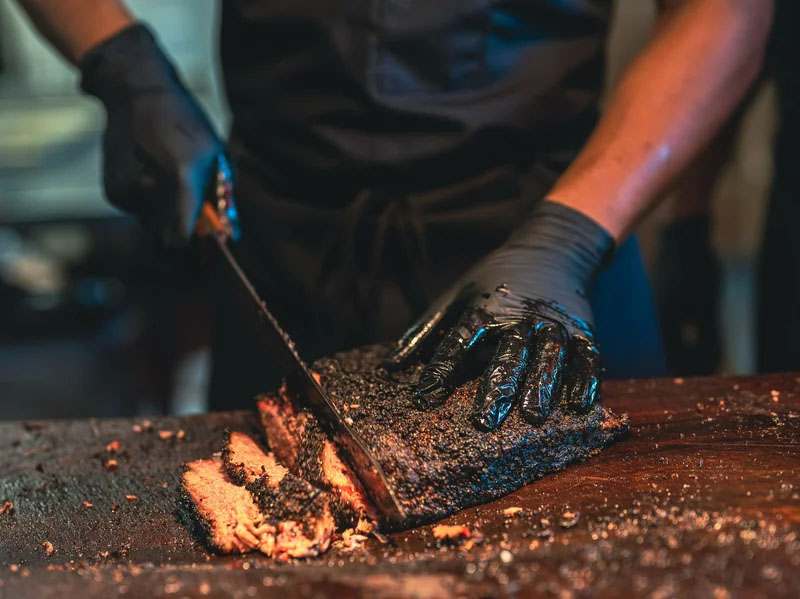Something brilliant happens to meat cooked for quite a while over somewhat low intensity. A couple of low-and-slow masters shared their insight on the set of experiences, workmanship and study of the experience.
Goats and Soft drink as a rule covers tales about the Worldwide South and at times checks out at how life there holds illustrations for us all. In this story in the Week after week Portion of Marvel series, we check out at a culinary procedure that had the contrary direction: With establishes in the Americas, it has fanned out around the globe. It’s the narrative of slow cooking meat through smoking. Senior proofreader Gisele Grayson, a sluggish cooking devotee, says the outcomes are superb. Any individual who has had the honor of tasting her sluggish cooked chicken would concur every available ounce of effort.
As I stroll in SmokeDatt bar-b-que in Washington, D.C. from the beginning a Sunday morning, George Cherishing and Wendell Headley are preparing 15 racks of St Louis-style ribs. They intend to smoke 30 of them as well as around 160 pounds of pork butt (which comes from the shoulder, regardless of the name). Smoking implies that they’ll cook the meat at low temperatures for quite a while – the “low and slow” cook a significant number of us smokers relish – – with the meat not straightforwardly on top of the fire.
Something brilliant happens to meat cooked for quite a while over somewhat low intensity. A couple of low-and-slow masters shared their insight on the set of experiences, workmanship and study of the experience.
We should accept the brisket – the lower chest region of the cow. “It’s the exemplification of smoking because it takes the longest. You put it in the smoker, and you just let it cook,” says Adoring, for whom brisket is his ongoing most loved cut. In any case, not at high temperatures. “You generally need to remain around that 225 to 250” degrees Fahrenheit, he notes.
A decent low-and-slow cooked brisket is truly difficult to portray on the page – it’s delicious, basically liquefies in your mouth and tastes thick, somewhat smoky with only a tad of roast. Be that as it may, for what reason does it take such a long time for a cut of meat, similar to a pork butt or brisket, to accomplish this ideal outcome? Matt Hartings is a scientific expert who educates at American College in Washington, D.C. furthermore, composed a book called Science in Your Kitchen. Meat is muscle, he says, and the proteins actin and myosin are available in every one of them. Cooking separates them, basically disentangling their curl like shape. The harder cuts of meat likewise have a ton of a protein called collagen.
“The reason for collagen in our muscles is to make them impervious to strain,” Hartings says. “This large number of cuts of meat that have loads of collagen, they are coming from proteins and creatures that are continually moving, correct? So the legs of a cow, chicken legs, chicken thighs.” Collagen likewise is essentially formed like a loop, and cooking on low intensity after some time delicately uncoils it. At the point when that’s what you do, says Hartings, the collagen “separates into gelatin. Gelatin makes Harden O, and you go from something truly firm and chewy to go to pieces delicate.”
Key to that delicate surface is holding the dampness. Cook the meat too quick and the normal dampness inside meat vanishes. The muscle filaments swarm together into a dry, chewy cut.
“So you can cook it at a super-high temperature, however it won’t taste as great,” says Hartings.
Both Hartings and Cherishing say you can’t hustle this science. As large numbers of us who’ve endeavored brisket can perceive you, persistence is critical. “I’ve seen a few briskets cook in eight to 10 hours. I’ve seen some require 14, 16 hours,” says Cherishing. “It’s something you simply don’t rush. What’s more, when it’s finished, it’s finished.”
A thermometer can educate you to when it’s finished. However, you need a specific surface, in addition to a temperature perusing, says Cherishing. “Ensure you cook it to where it possesses energy for the muscle strands to separate and get quite delicate, where you can cut it with a fork. You pull it up. It’s just pretty much ready to break all alone when it twists around your finger.”
On the off chance that you’re cooking with wood, you believe should do this with smoke you can scarcely see. say both Adoring and Hartings. Surging white smoke – bad. It might mean the wood is consuming excessively quick, making greater smoke particles that give the meat a cruel smoky taste. Lower-temp consuming, says Hartings, implies atoms in the wood, particularly the lignin, are separating into more modest particles, giving a wide range of perplexing flavors and smells. “Things like guaiacol, which is hot and smoky, or vanillin, which tastes like vanilla,” he says.
It’s that painstakingly created mix of wood, temperature and tolerance that makes the meat stand all alone. Cherishing, as a matter of fact, has a saying: “We don’t have anything to stow away. We put the sauce as an afterthought.”
Different variables are engaged with cooking meat flawlessly – the rubs, the bark creation, accomplishing a smoke ring (a pink ring simply underneath smoked meat, grain for an entire different science story).
Smoking itself had been utilized for food protection all over the planet for millennia. Its cousin, cooking over a pit, is a low and slow cook with the meat all the more straight over the fire — and that probably has profound roots in Local American cooking, which Europeans and subjugated Africans saw when they showed up in North America. “At last, oppressed Africans gained from the a large number of Local Americans who were likewise subjugated,” says self-portrayed southern fare researcher Adrian Mill operator, creator of Dark Smoke: African Americans and the US of Grill. “Then they began sharpening grill into what it becomes.” By the nineteenth hundred years, he says, slow cooking an entire creature over a pit was far reaching — and ultimately spread all over the planet.
“Grill came from the Americas to West Africa since they embraced this load of other stuff from the Americas, similar to stews and tomatoes,” Mill operator says. Also, presently, with the guide of YouTube instructional exercises, he says he’s seen American grill go worldwide. For example, while voyaging abroad, he visited The Land Smokehouse in Oman – named after Cleveland, where the proprietor said he had extraordinary grill in Ohio and brought it home, vowing that he cooks meat Texas-style for around 14 hours.
Furthermore, as you head to your end of the week grills, for those of you who appreciate smoking meat, this is the way our threesome of specialists do a low-and-slow cook of ribs: the folios they use (that is the layer of sauce applied to meat so the rub sticks to it) and their rubs (the flavor combination applied prior to cooking).
Cherishing and St. Louis style pork ribs. The cover: olive oil however with a spritz of apple juice vinegar first. He’s not sharing his recipe for the rub: “Indeed, you know, most ribs have exactly the same thing in it,” he says, “however we really do place a couple of additional things in there to give our ribs and flavor.”
Hartings and pork child back. His fastener: olive oil. His rub: paprika (“standard or smoked, contingent upon my state of mind”), a little earthy colored sugar (to assist with a covering), cayenne, onion powder, garlic powder, dark pepper, cumin, dried mustard. “I really do change my rub a lot. At times I’ll utilize Chinese 5-zest, here and there I’ll go better with cloves and nutmeg.”
Mill operator and pork spare ribs. He’ll skirt the fastener, when in doubt, however some of the time goes for “a spritz of apple squeezed apple” and afterward puts on the rub. He exhorts, “go light on the sugar so it doesn’t consume.”
The final product ought to be your week by week portion of culinary marvel.








































